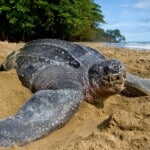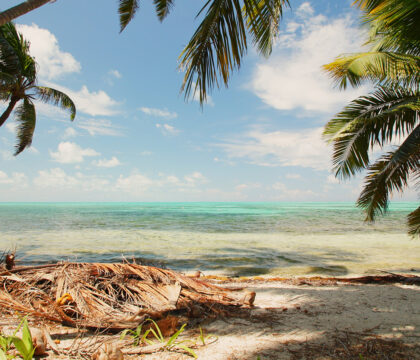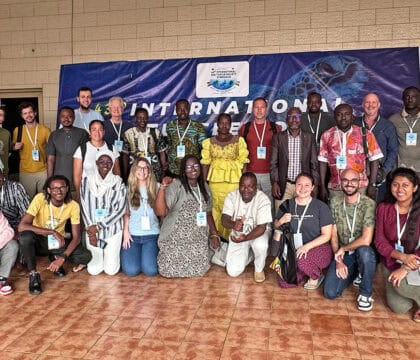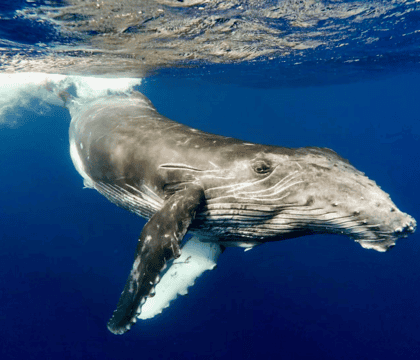February 13, 2025 • Travel Ideas
According to Palauan creation myth, the god Uchelianged, displeased by the emptiness of the ocean, lifted the islands of Palau from the ocean bed. Atop one such island, a giant clam burst open birthing a plethora of lifeforms, including humans. When you see Palau’s Rock Islands rising like giant lime-stone mushrooms from crystalline waters, it is easy to believe the myths.
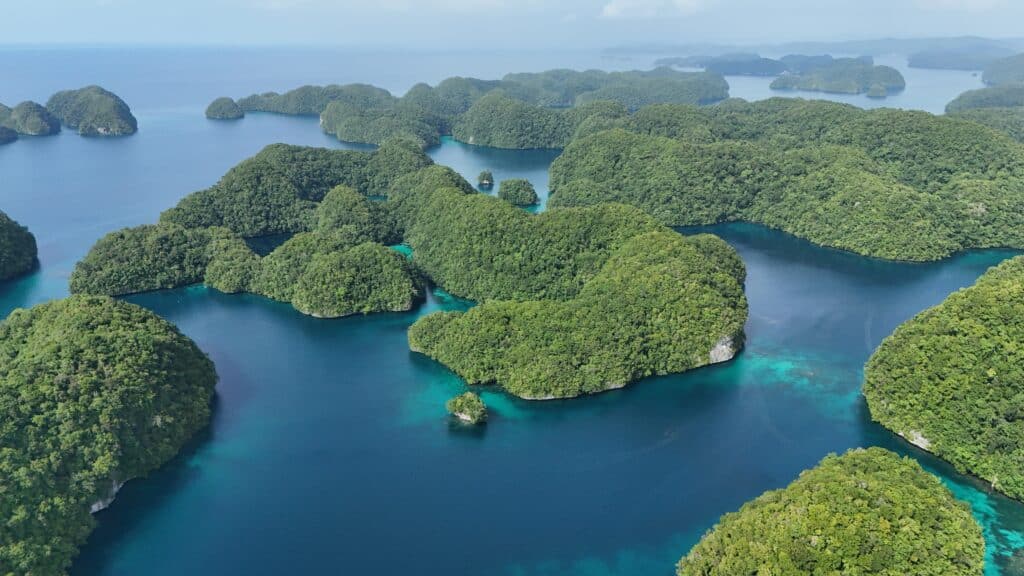
Ancient volcanic activity formed Palau’s Rock Islands, an uninhabited island group renowned as a destination for snorkelers and divers. © Udi Bornovski
Historians believe that Palau, a tiny island nation east of the Philippines, is among the last regions of the planet to be inhabited by humans. Even today, Palau remains well off the beaten path for even the most intrepid traveler. Only nine of Palau’s 340 islands are inhabited, and only 18,000 people live on those islands permanently. The wild rules much of Palau, and the government has gone to great lengths to ensure that its natural wonders are well preserved.
The Rock Islands are the nation’s most celebrated and iconic natural area, encompassing nearly 10% of Palau’s territory and home to world renowned biodiversity that has led to their recognition as a UNESCO World Heritage Site of “outstanding universal value.” The Visitors to the Rock Islands quickly feel immersed in the wild as they cruise between limestone spires and snorkel some of the healthiest coral reefs in the world where over 1,500 fish and 385 hard coral species are found (that’s more than five times the hard coral species found in the entire Caribbean!). While many tourists are just finding out about this hidden gem, Oceanic Society has been leading snorkeling trips in Palau’s Rock Islands for nearly 30 years. We sat down with Oceanic Society staff member and naturalist Rosie Jeffrey, to discuss what makes Palau so special.

Near countless coral reefs surround Palau’s Rock Islands. © Raymond Boland
FAQs on the Rock Islands
What are the Rock Islands? An archipelago of 250-300 uninhabited islands (across 42 square kilometers / 16 square miles) formed by ancient volcanic activity. The Rock Islands are a biodiversity hotspot recognized as a UNESCO World Heritage Site, a popular ecotourism destination, and a cultural icon for the Palauan people.
Where are the Rock Islands? The Rock Islands are located in the south of Palau, about an hour boat ride from Koror, the commercial and economic hub of Palau (with a population of 11,000). The islands are accessible only by boat and through an organized tour.
When to go to the Rock Islands? Like many places in the tropics, the best time to appreciate the outdoors is generally the dry season. In Palau, this runs roughly from November through April.
Preserving the Natural Wonders of the Rock Islands
“Palau has the cleanest beaches and the cleanest water that I’ve ever been in,” said Rosie, who has traveled extensively around the world as a naturalist guiding Oceanic Society’s expeditions. Water visibility, she described, is regularly 70 feet, allowing optimal viewing of some of the healthiest coral reef systems in the world.
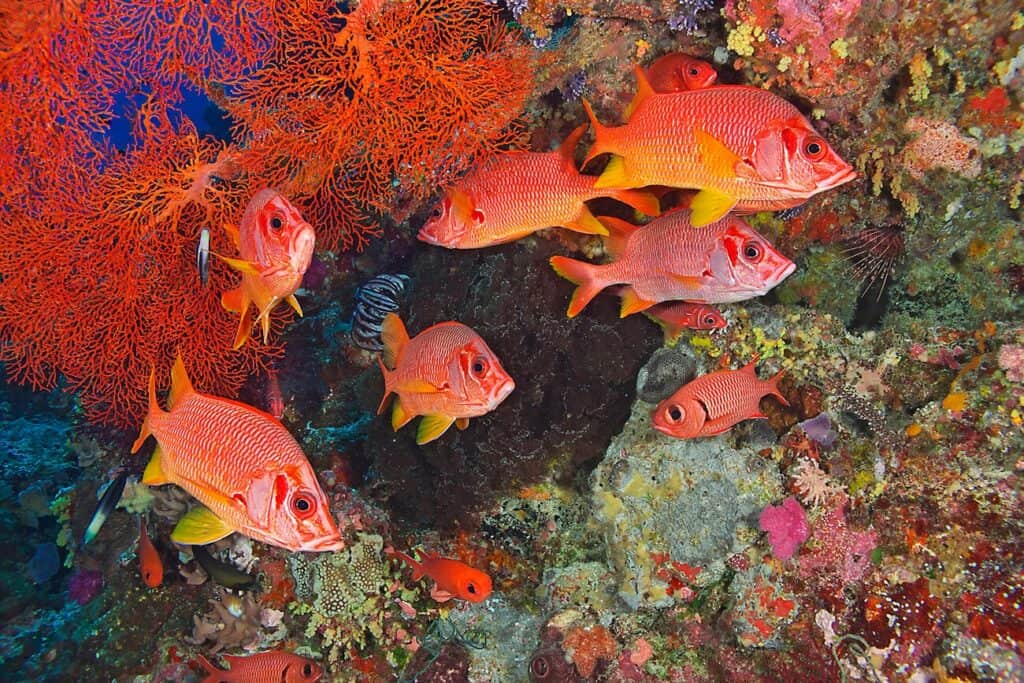
Palau is home to 385 hard coral species and over 1,500 fish species, including these saber squirrelfishes. © Keoki Stender
The flourishing marine life is no accident. The Palauan government has a long history of ocean conservation efforts. In 2001, Palau created the world’s first shark sanctuary, which has since expanded to cover the entire country. In 2015, they designated the entirety of their territorial waters as a marine protection zone (over 230,000 square miles of ocean) – outright banning commercial fishing.
The government is keenly aware that protecting its natural wonders has a massive economic payoff through tourism. A study in Palau showed that a single living reef shark is worth a staggering $1.9 million in tourism appeal over its lifetime compared with the value of just $108 for a dead shark. Nearly 40 percent of Palau’s economy is driven by tourism. Visitors are even required to pledge to protect the environment as they visit, signing a statement that reads: “the only footprints I shall leave are those that will wash away.”
The results of these protective measures have been staggering – a key indicator being the prevalence of sharks. “You will see sharks,” assured Rosie. One snorkel site is even called “Shark City” due to the sheer number of reef sharks that frequently visit. “That means the ocean is healthy,” she said. Sharks aren’t interested in people, assured Rosie, they are interested in the fish found in these coral reefs – and they play a key role in maintaining the health of the coral.
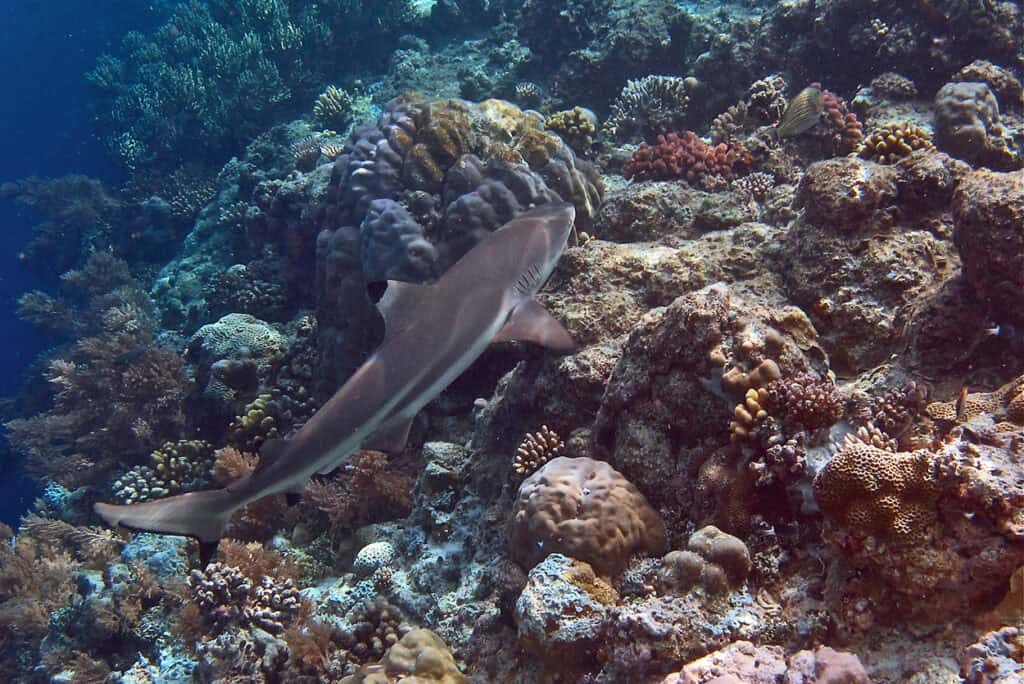
Black tip reef sharks are a common sight while snorkeling in Palau’s Rock Islands. © Wayne Sentman
Sharks eat larger predatory fish, which helps keep the populations of smaller fish in healthy supply. The smaller fish eat algae, helping keep the corals healthy. During an era of global coral decline, the coral reefs in Palau have shown resilience to climate change induced bleaching – which scientists believe may offer insights on how to combat this trend elsewhere.
Rosie explained that the iconic mushroom shaped Rock Islands are the tips of an underwater mountain range covered in coral reefs. “There are [snorkel and dive] sites everywhere,” she described how many of the best sites are just a quick boat ride away from each other, making exploration convenient.
But it’s not just the Rock Islands’ world-class coral formations that leave visitors awestruck. Because the Rock Islands are near deep ocean channels, the coastal waters are visited by manta rays, dugongs, sharks, whales, and dolphins. Bustling feeding areas sometimes lead to manta rays breaching the surface of the water, flying momentarily like giant birds.
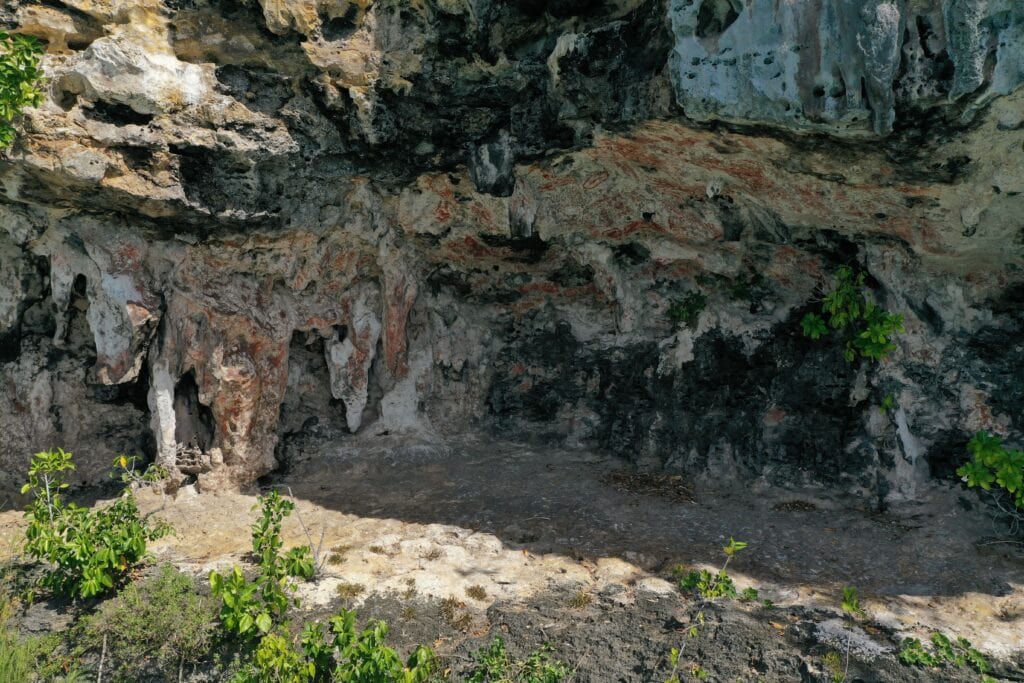
Palau’s Rock Islands hold many mysteries, including caves lined with ancient rock paintings amid the walls of limestone cliffs. © Udi Bornovski
On land, the Rock Islands are brimming with mangroves, caves, forests, wetlands, and even over 52 marine lakes (more than any other site in the world) which have their own unique ecosystems. The ethereal “jellyfish lake” is one such example, in which snorkelers can drift through thousands of stingless jellyfish.
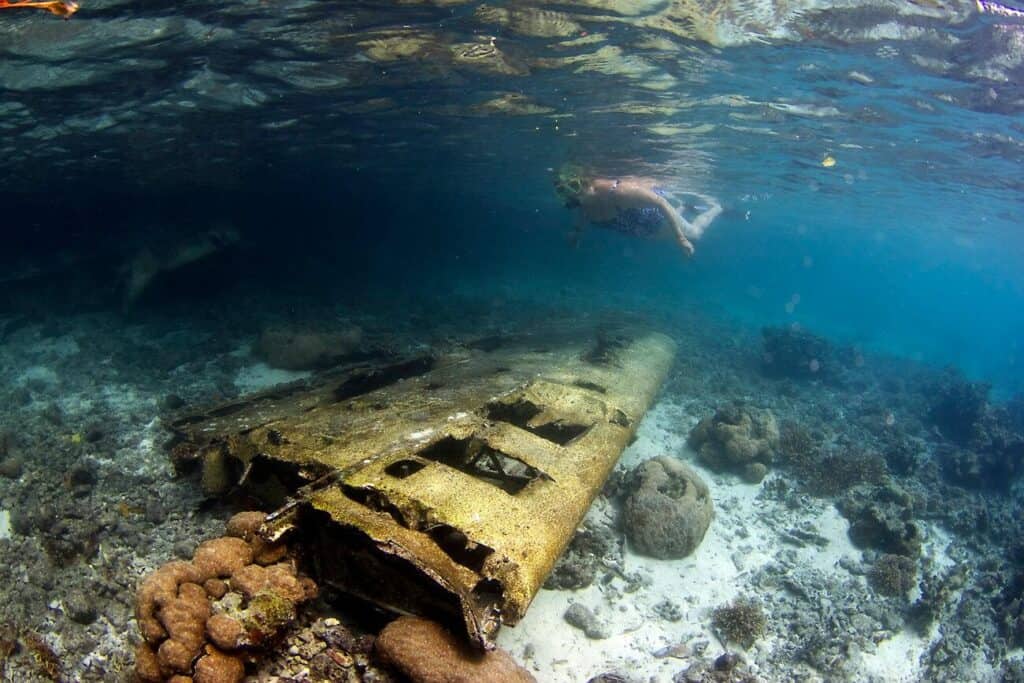
Snorkelers can examine the underwater ruins of WWII-era planes in Palau’s Rock Islands. © Keoki Stender
Meanwhile, along some of the beaches are the ruins of World War II-era fighter planes – relics of battles fought between the Japanese and the United States over the skies of Palau. Some of these wrecks are found at shallow depths, can be easily seen while snorkeling, and have been reclaimed by the natural world. “There’s marine life all over them, which is just a really unique and really cool experience,” said Rosie.
Experience the Rock Islands with Oceanic Society
Palau is a prime example of how tourism, when done ethically and sustainably, has the power to protect nature while simultaneously growing economies. This dynamic forms the basis of Oceanic Society’s sustainable travel model, where tourism provides communities an alternative income to resource extraction and can change economic landscapes for generations.
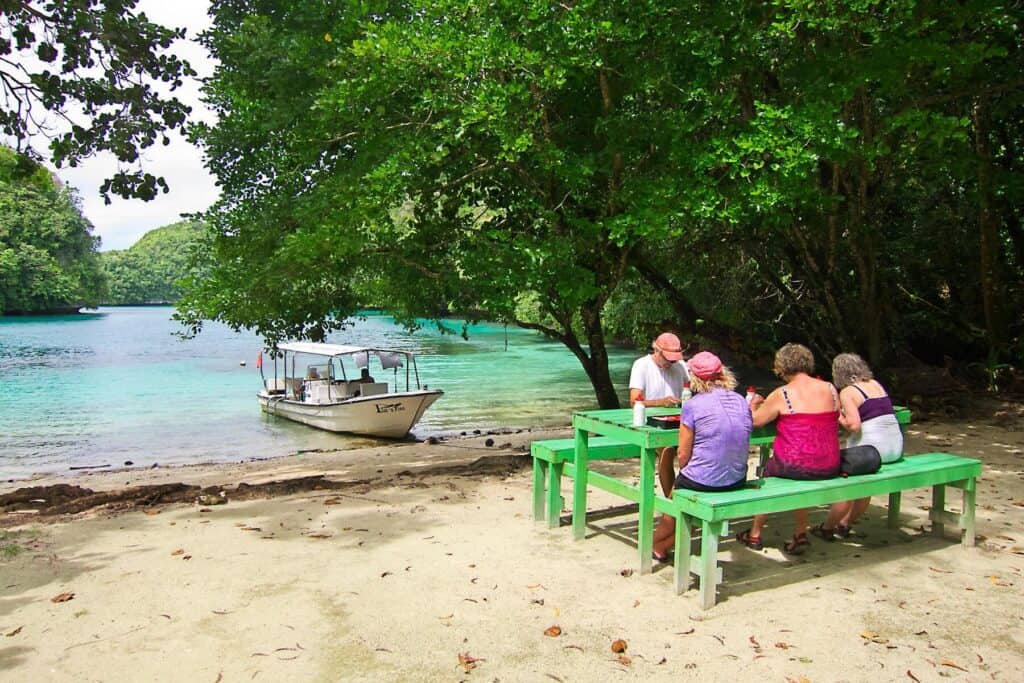
Oceanic Society travelers take a break from exploring the many snorkel sites that surround the Rock Islands. © Keoki Stender
Over the three decades we have been bringing guests to Palau, we have also learned from and supported the work of the Micronesian Shark Foundation. Additionally, Oceanic Society travelers each directly sponsors the removal of 200 pounds of ocean plastic pollution by simply signing up for a trip.
We hope to see you on our next snorkeling trip to Palau!

